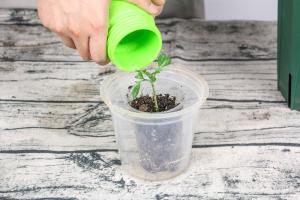When is a Good Time to Plant Tulip Bulbs
Tulips are one of the most popular spring-blooming bulbs, known for their bright colors and ability to add life to any garden. However, many gardeners are uncertain about when to plant their tulip bulbs in order to achieve the best results. In this article, we'll explore the best time to plant tulip bulbs, how to plant them, and some tips for nurturing them to ensure a beautiful spring display.
The Ideal Planting Time for Tulip Bulbs
The best time to plant tulip bulbs is in fall, ideally between September and December. This is because tulips require a period of cold dormancy in order to grow properly. By planting in the fall, the bulbs will have enough time to establish roots before the cold winter months begin.
How to Plant Tulip Bulbs
Planting tulip bulbs is relatively simple. To begin, choose a sunny spot in your garden with well-draining soil. Dig a hole that is two to three times deeper than the height of the bulb, and place the bulb in the hole with the pointed end facing up. Cover the bulb with soil, water it thoroughly, and add a layer of mulch on top to protect it from harsh weather conditions.
Tulips should be planted about six inches apart to give them enough space to grow without overcrowding. Additionally, you should avoid planting tulip bulbs in areas that are prone to standing water, as this can lead to rot and disease.
Tips for Nurturing Tulip Bulbs
Once your tulip bulbs are planted, there are a few important tips to keep in mind to ensure that they thrive. Firstly, be sure to water your tulips regularly, particularly during the dry summer months. This will help to keep the soil moist and prevent the bulbs from drying out.
It's also a good idea to fertilize your tulips once or twice a year with a balanced fertilizer. This will help to provide them with the nutrients they need to grow strong and healthy.
Finally, be sure to deadhead your tulips once they have finished blooming. This means removing the spent flowers from the plant to prevent them from going to seed. This will help to redirect the plant's energy back into producing new flowers and ensuring that it continues to thrive for years to come.
Conclusion
Planting tulip bulbs is a relatively straightforward process, and with a little bit of care and attention, you can enjoy beautiful spring blooms for years to come. By following the guidelines outlined in this article, you can ensure that your tulip bulbs are planted at the right time, in the right conditions, and given the best possible chance to thrive in your garden.

 how many times do yo...
how many times do yo... how many planted tre...
how many planted tre... how many pine trees ...
how many pine trees ... how many pecan trees...
how many pecan trees... how many plants comp...
how many plants comp... how many plants can ...
how many plants can ... how many plants and ...
how many plants and ... how many pepper plan...
how many pepper plan...































